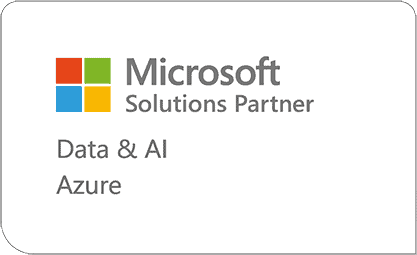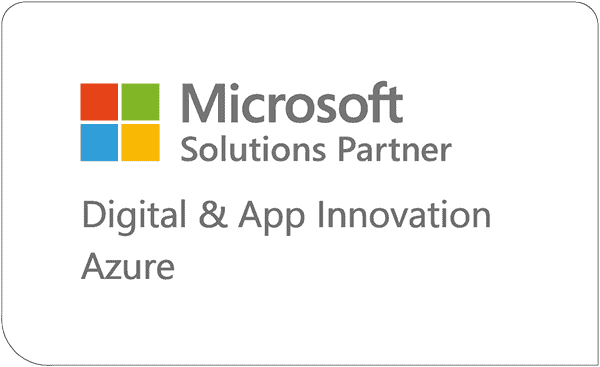Microsoft Power Platform with Fabric: Empowering Intelligent Low-Code Applications and Analytics
Microsoft Fabric and Power Platform integrate and augment one another to fight against data fragmentation. Let’s see how low-code application development can benefit from Fabric, Dataverse, and the Power Platform!
The consultant life has afforded me the opportunity to witness the remarkable impact of Microsoft Power Platform and Fabric at multiple organizations. I’ve seen the way businesses have evolved their development of applications and harness the power of analytics.
Typical projects now require a diverse team of Smartbridge experts across devops and data, as the need to scale enterprise-grade application development while leveraging data and analytics is required for a minimal viable product. Microsoft’s innovative combination of Power Platform and Fabric has proven to be a game-changer in addressing these critical needs, and I am thrilled to share my insights and experiences with you.
The Demand for Scalable Application Development
The digital revolution has led to an exponential increase in application development, with estimates projecting the creation of around 500 million applications by 2025 (IDC FutureScape). To meet this demand, businesses require a robust and scalable platform that accelerates application development while minimizing costs.
This is where Microsoft Power Platform with Fabric truly shines. It empowers organizations to turn ideas into reality by enabling everyone, regardless of their coding expertise, to build custom applications that solve business challenges. Through the magic of low-code development, Power Platform has empowered business users to become makers, reducing the dependency on traditional development methods.
The Power of Low-Code Development
Power Apps: Turning Ideas into Organizational Solutions
I have seen how Power Apps, a core component of Microsoft Power Platform, empowers business users to transform their ideas into powerful organizational solutions. It allows users to create intuitive, user-friendly interfaces and workflows to streamline processes and enhance productivity. By eliminating the need for complex coding, Power Apps democratizes application development, enabling users to transform their ideas into reality quickly.
Power Automate: Boosting Business Productivity through Workflow Automation
Another key element, Power Automate, has been instrumental in boosting business productivity through workflow automation. It empowers users to automate organizational processes, freeing up valuable time for more crucial work. Power Automate enables seamless data flow and collaboration across different systems, ensuring efficient and streamlined workflows.
Copilot (formerly Power Virtual Agents): Building Intelligent Virtual Agents without Coding
The game-changing capability of Copilot in building chatbots and virtual agents without coding has truly impressed me. This tool allows users to easily create chatbots to engage in conversational interactions with customers and employees, leveraging artificial intelligence to provide intelligent responses and enhance customer service.
The Power of Analytics with Power BI
Now, let’s talk about the heart of every business – data. Power BI, an integral part of Power Platform, is a game-changer in the realm of business intelligence. It provides a comprehensive platform for unlocking powerful insights, visualizing data in meaningful ways, and translating those insights into impactful actions.
It’s not just about data – it’s about making data come alive and driving informed decisions that propel businesses forward.
75%
of organizations will move to a single source of truth for their data with ability to support federated data-driven initiatives like low code development
– Forrester Total Economic Impact Study
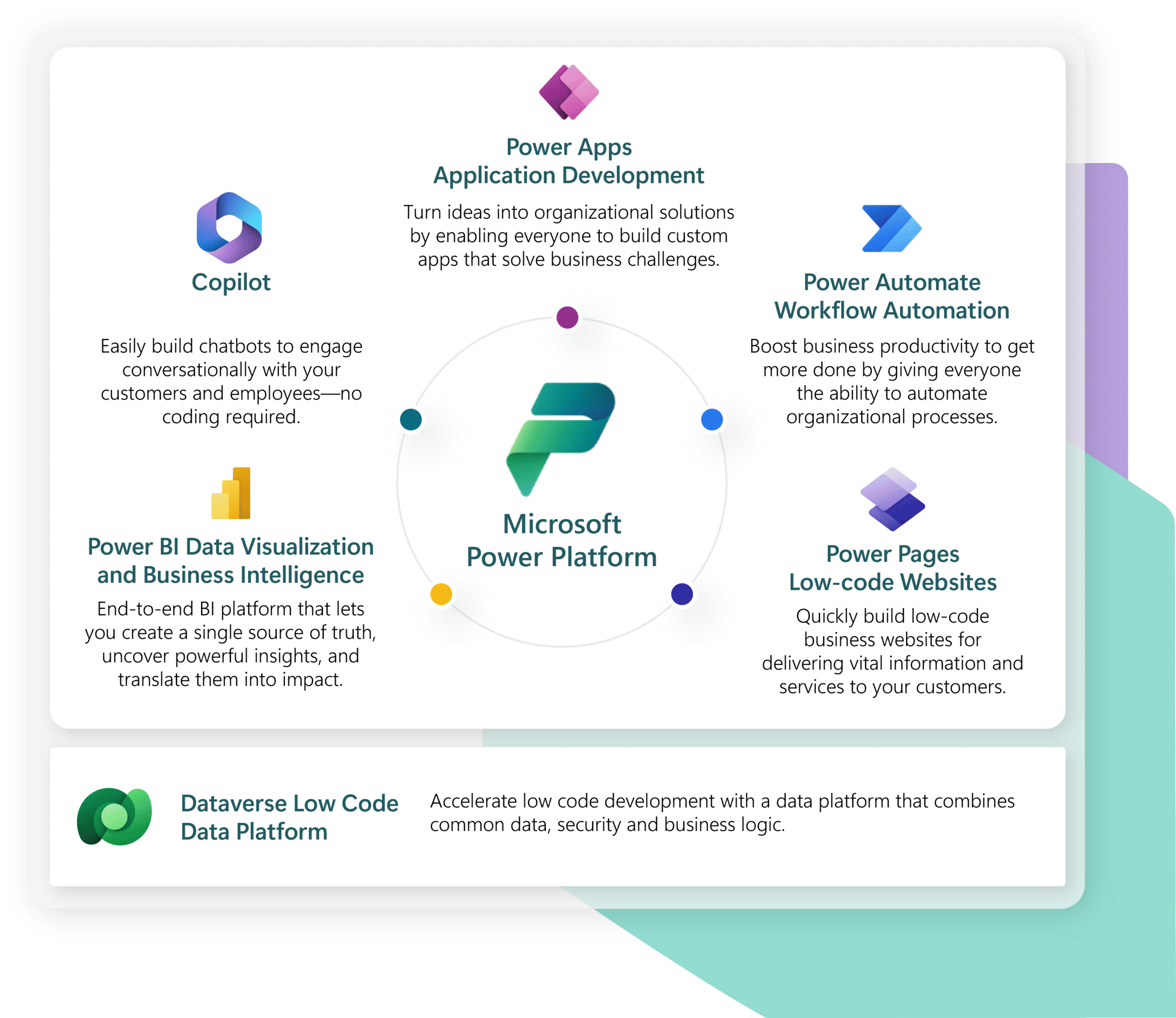
Image courtesy of Microsoft
Whether you are creating new applications or extending others, you can count on this best-in-class portfolio of low code tools to help you:
Introducing Microsoft Fabric: The Data Platform for the Era of AI
But wait, there’s more! Microsoft Fabric has been a revelation, serving as a unified suite of analytical experiences that seamlessly integrates with Power Platform. It provides a one-stop-shop for data integration, data engineering, real-time analytics, data science, and business intelligence, empowering organizations to harness the power of data and analytics to transform their operations and drive innovation.
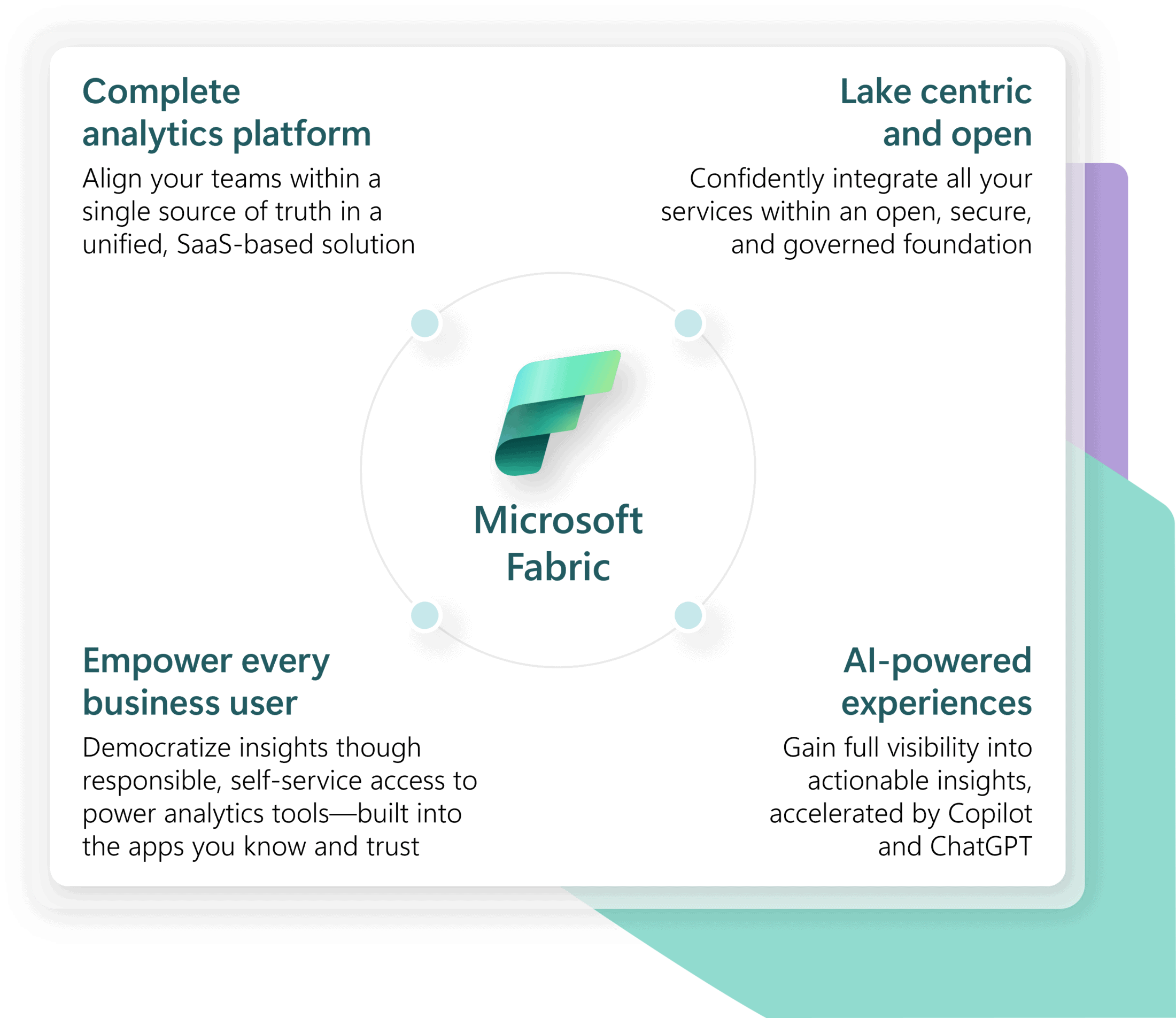
Image courtesy of Microsoft
Unified Enterprise-Wide Data for Low-Code Applications
Fabric enables the integration of enterprise-wide data with low-code applications developed using Power Platform. It provides a unified data foundation, allowing business users to access and leverage data from various sources, whether it be on-premise, in the cloud, or external. By eliminating the need for data copies and infrastructure inefficiencies, Fabric ensures data consistency and enhances the performance of low-code applications.
Complete Analytics Platform for Actionable Insights
Fabric empowers organizations to align their teams with a single source of truth, providing a unified, SaaS-based solution for analytics. With Fabric, businesses can perform real-time analytics on large volumes of data streaming from applications, websites, IoT devices, and more, enabling actionable insights and data-driven decisions.
Empowering Every Business User with Responsible Self-Service Access
One of the most exciting aspects of Microsoft Fabric is its democratization of insights by providing responsible, self-service access to powerful analytics tools. Business users, regardless of their technical expertise, can leverage Fabric’s analytics capabilities through familiar apps they use daily, empowering them to make informed decisions based on data-driven insights.
Seamless Integration of Low-Code Tools with Unified Analytics
Fabric seamlessly integrates with Power Platform, enhancing the capabilities of low-code tools such as Power Apps and Power Automate through Dataverse. This integration enables organizations to create intelligent low-code applications and analytics, leveraging the power of Fabric’s unified analytics platform.
Dataverse makes it easy to connect Power Platform to Fabric:
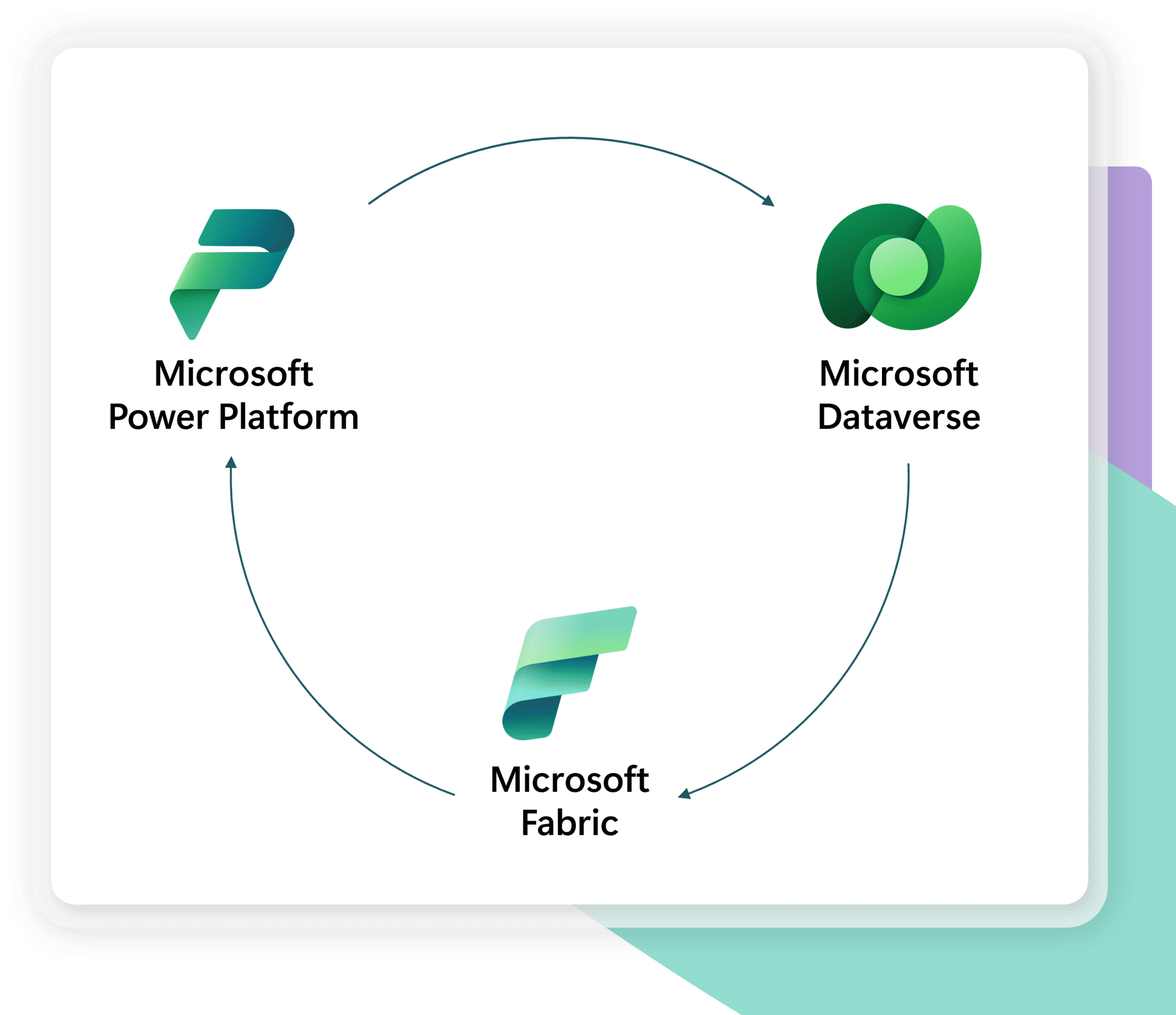
Image courtesy of Microsoft
Integrating Microsoft Fabric and Power Platform: Steps to Connect
To integrate Microsoft Fabric with Power Platform, organizations need to follow a series of steps. These steps ensure a smooth and efficient connection between the two platforms, enabling organizations to leverage the full potential of low-code development and analytics. Let’s explore the necessary steps to connect Microsoft Fabric and Power Platform.
Fabric + Power Platform = digital enablement at its finest
The seamless integration of Microsoft Power Platform with Fabric has been nothing short of transformative in my experience. The possibilities are truly endless when you combine the power of low-code development and analytics with Microsoft Fabric. By embracing this innovative suite of tools, businesses can unlock the true potential of their operations and start building intelligent, data-driven applications today. I am genuinely passionate about the impact that Microsoft Power Platform and Fabric can have on businesses, and I am excited to see the continued evolution of these powerful tools in driving business transformation.
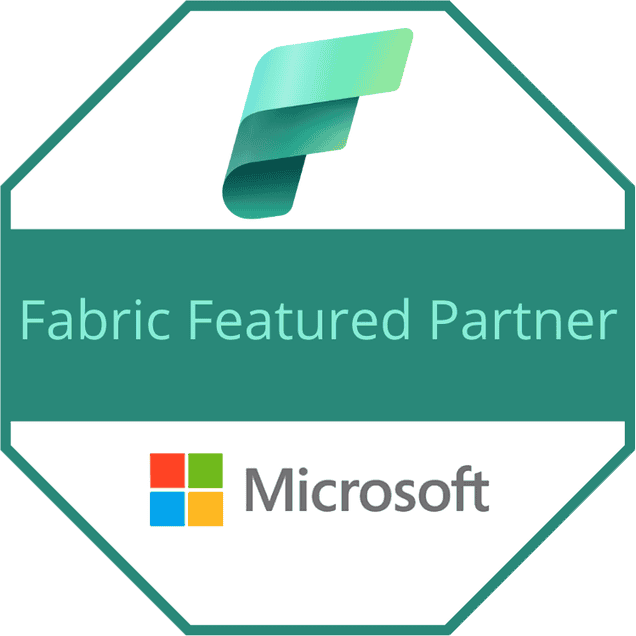
Smartbridge is a Microsoft Fabric Featured Partner. Check out what that means!

Keep Reading: Microsoft Fabric Real Time Analytics
Looking for more on Microsoft data and analytics solutions?
Explore more insights and expertise at smartbridge.com/data
There’s more to explore at Smartbridge.com!
Sign up to be notified when we publish articles, news, videos and more!
Other ways to
follow us:


